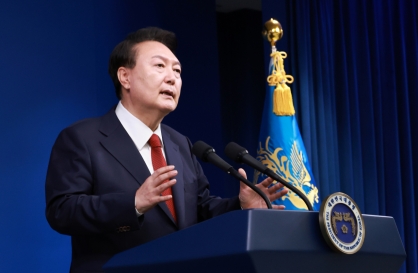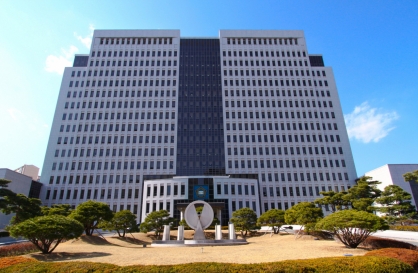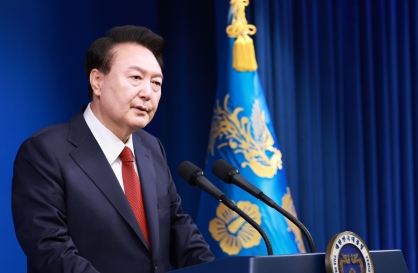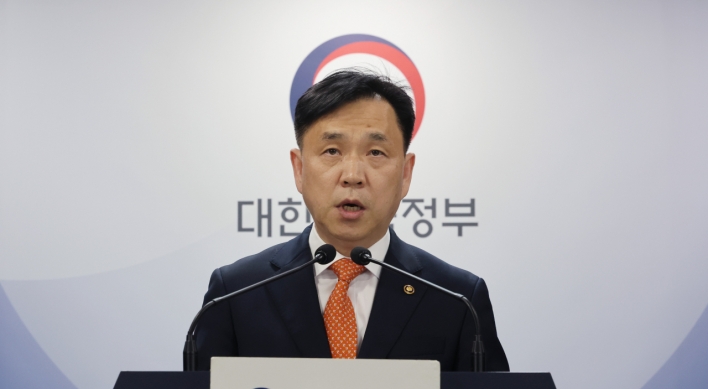[Editorial] Gender pay gap
Women’s employment status still poor in Korea
By Korea HeraldPublished : May 20, 2015 - 18:49
Data released by the National Tax Service this week drew attention again to a wide gender wage gap in the country and the need to bring more Korean women into the workforce.
The average wage of a female worker reached 21 million won ($19,000) in 2013, just 57.5 percent of the figure for a male worker. The amount represents a 21.4 percent rise from 17 million won in 2009, but still trails the 22.3 percent increase for men over the same period. Male workers received an average wage of 37 million won in 2013, up from 30 million won four years earlier.
Women made up 39.3 percent of the total workforce, numbering 16.35 million in 2013, a slight increase from 36.6 percent in 2009.
These unimpressive data concerning female employment and wage do not match the fact that Korean women are the most educated in the world.
In Korea, which has the highest college entrance rate in the 34-nation Organization for Economic Cooperation and Development, the figure for women has exceeded that for men since 2009. In 2013, nearly 75 percent of female high school graduates entered university, while 68.6 percent of male graduates did so, according to data from the national statistics office.
By contrast, the proportion of female college graduates engaged in economic activity in that year was 25 percent lower than the figure for their male counterparts.
The main reason for Korean women’s lower pay is that a majority of them have low-paying jobs in the service and retail sectors. Only 4 in 10 female wage earners are regular employees.
This unstable and disadvantageous employment status for women is closely related to the difficulty they have juggling their work and family roles. According to data from Statistics Korea, women who quit their jobs due to marriage, pregnancy or childbirth accounted for 20.3 percent of all housewives in 2013, up 4.1 percent from a year earlier. It is virtually impossible for women to return to their workplaces at the same position after a long hiatus in their careers. They are likely to end up landing low-paying jobs on a temporary or irregular basis.
Efforts should be stepped up to enable female employees to continue to remain at work and create more decent jobs with flexible working hours, which could be taken up more easily by highly skilled and well-educated women.
The average wage of a female worker reached 21 million won ($19,000) in 2013, just 57.5 percent of the figure for a male worker. The amount represents a 21.4 percent rise from 17 million won in 2009, but still trails the 22.3 percent increase for men over the same period. Male workers received an average wage of 37 million won in 2013, up from 30 million won four years earlier.
Women made up 39.3 percent of the total workforce, numbering 16.35 million in 2013, a slight increase from 36.6 percent in 2009.
These unimpressive data concerning female employment and wage do not match the fact that Korean women are the most educated in the world.
In Korea, which has the highest college entrance rate in the 34-nation Organization for Economic Cooperation and Development, the figure for women has exceeded that for men since 2009. In 2013, nearly 75 percent of female high school graduates entered university, while 68.6 percent of male graduates did so, according to data from the national statistics office.
By contrast, the proportion of female college graduates engaged in economic activity in that year was 25 percent lower than the figure for their male counterparts.
The main reason for Korean women’s lower pay is that a majority of them have low-paying jobs in the service and retail sectors. Only 4 in 10 female wage earners are regular employees.
This unstable and disadvantageous employment status for women is closely related to the difficulty they have juggling their work and family roles. According to data from Statistics Korea, women who quit their jobs due to marriage, pregnancy or childbirth accounted for 20.3 percent of all housewives in 2013, up 4.1 percent from a year earlier. It is virtually impossible for women to return to their workplaces at the same position after a long hiatus in their careers. They are likely to end up landing low-paying jobs on a temporary or irregular basis.
Efforts should be stepped up to enable female employees to continue to remain at work and create more decent jobs with flexible working hours, which could be taken up more easily by highly skilled and well-educated women.
-
Articles by Korea Herald





![[K-pop’s dilemma] Can K-pop break free from ‘fandom’ model?](http://res.heraldm.com/phpwas/restmb_idxmake.php?idx=644&simg=/content/image/2024/05/09/20240509050541_0.jpg&u=20240509173751)




![[News Analysis] Yoon's first 2 years marked by intense confrontations, lack of leadership](http://res.heraldm.com/phpwas/restmb_idxmake.php?idx=644&simg=/content/image/2024/05/09/20240509050612_0.jpg&u=20240509233252)








![[Today’s K-pop] NCT’s Mark to drop 1st solo album in February 2025](http://res.heraldm.com/phpwas/restmb_idxmake.php?idx=642&simg=/content/image/2024/05/10/20240510050597_0.jpg&u=)